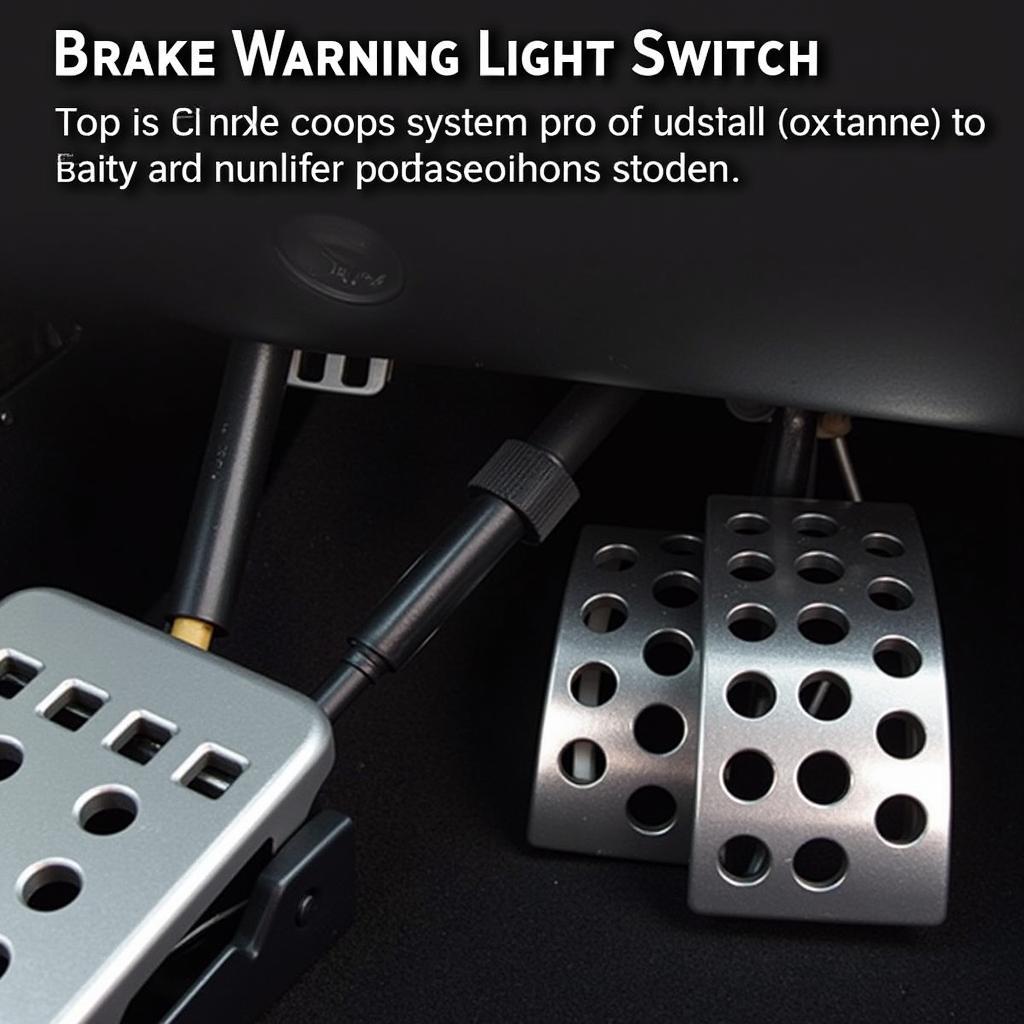The moment you see that tell-tale yellow or red light on your dashboard screaming “BRAKE!”, a sense of dread washes over you. But don’t panic. While it’s never wise to ignore this crucial warning, understanding what it means and how long you can safely drive can save you from unnecessary stress and costly repairs. Let’s delve into the intricacies of brake pad warning lights and empower you to make informed decisions.
Deciphering the Brake Pad Warning Light
Your car’s brake pad warning light is your first line of defense against worn-out brake pads. This seemingly simple light is connected to a sensor embedded within your brake pads. As the brake pads wear down with use, the sensor triggers the warning light, alerting you to take action. Ignoring this light can have severe consequences, impacting your safety and potentially leading to expensive brake system damage.
So, How Long Can You Drive With the Warning Light On?
The million-dollar question: how long can you keep driving? Unfortunately, there’s no one-size-fits-all answer. Several factors influence the remaining lifespan of your brake pads, including:
- Driving Habits: Frequent hard braking, city driving with constant stop-and-go traffic, and heavy loads all contribute to faster brake pad wear.
- Brake Pad Quality: High-quality brake pads generally last longer than their cheaper counterparts.
- Vehicle Type and Weight: Heavier vehicles and those designed for performance tend to wear out brake pads faster.
A Word of Caution: Driving with the brake pad warning light on for an extended period is highly discouraged. The light signals that your brake pads are nearing the end of their service life. Continuing to drive could lead to:
- Reduced Braking Efficiency: Worn-out brake pads compromise your car’s ability to stop effectively, increasing the risk of accidents.
- Damage to Rotors: Driving with worn-out pads can damage the brake rotors, leading to costly repairs.
- Complete Brake Failure: In extreme cases, ignoring the warning light can lead to complete brake failure, putting you and others at serious risk.
What to Do When the Light Turns On
- Don’t Panic: While the warning light demands attention, it doesn’t necessarily signify an immediate emergency. However, it’s crucial to address the issue promptly.
- Assess Your Driving: If you notice the light just before a long trip, it’s best to postpone and schedule an inspection. For short trips, proceed with caution but prioritize a brake check at your earliest convenience.
- Schedule an Inspection: Contact a trusted mechanic specializing in brake systems to inspect your brake pads, rotors, and calipers. 2003 vw jetta brake pad warning light.
- Consider Replacement: If the inspection reveals significant wear, opt for brake pad replacement.
Extending the Life of Your Brake Pads
While driving habits play a significant role, proactive measures can help extend your brake pads’ lifespan:
- Smooth Braking: Anticipate stops and apply the brakes gradually instead of slamming them.
- Reduce Load: Avoid carrying unnecessarily heavy loads, as they strain the brake system.
- Quality Brake Pads: Invest in high-quality brake pads from reputable brands for improved durability and performance. 2013 vw jetta brake pad warning light reset.
Frequently Asked Questions
1. Can I reset the brake pad warning light myself?
While it’s possible in some car models, it’s recommended to have a qualified mechanic reset the light after inspecting and servicing the brakes.
2. How much does it cost to replace brake pads?
The cost varies depending on your car model, brake pad type, and labor charges. On average, expect to pay between $150 and $300 per axle.
3. How often should I get my brakes checked?
It’s advisable to have your brakes inspected at least once a year or every 12,000 miles, whichever comes first.
4. Can I drive with the brake pad warning light on for a short distance?
While it’s not recommended, driving a short distance with caution may be acceptable if you plan to address the issue immediately.
5. Is it safe to ignore the brake pad warning light?
Absolutely not. Ignoring the warning light can lead to severe safety hazards and costly brake system damage.
6. What other lights on my dashboard should I never ignore?
Besides the brake pad warning light, never ignore the check engine light, oil pressure warning light, and airbag warning light.
7. Can worn-out brake pads affect my car’s fuel efficiency?
Yes, worn-out brake pads can create friction and drag, reducing your car’s fuel efficiency. vw jetta brake pad warning light reset.
The Final Word
“Safety first” is not just a slogan; it’s a way of life, especially when it comes to your car’s braking system. brake pad warning light vw jetta. While the “how long can you drive?” question lingers, the responsible answer always prioritizes safety. Heed the brake pad warning light, schedule an inspection promptly, and ensure your car’s braking system remains in peak condition for a safe and enjoyable driving experience. 2006 vw jetta tdi brake pad warning wiring.


